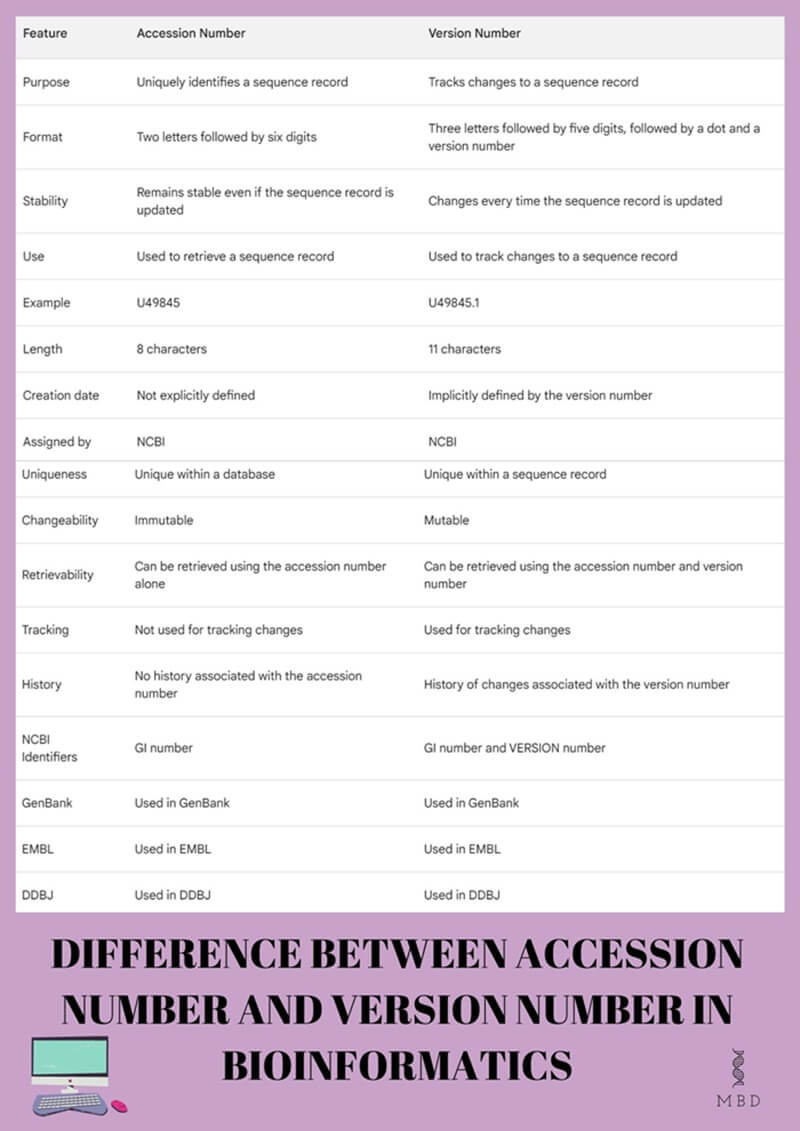Difference between Accession number and Version number in Bioinformatics

In the incredibly growing field of bioinformatics, accession numbers and version numbers are used to identify and track particular biological sequences or data entries. In this article, we will be covering the difference between the Accession number and Version number in Bioinformatics.
Table of Contents
Introduction to Bioinformatics
Bioinformatics is an interdisciplinary field that considers the extensive role of combining biology, computer science, and statistics to analyze and interpret biological data. It involves developing and applying computational methodologies, algorithms, and sensitive tools to study biological systems, analyzes large-scale biological datasets, and extract meaningful insights from the vast amount of biological information available. Before looking at the difference between the Accession number and Version number in bioinformatics, let’s look at them individually first.
Accession Number
An accession number acts as a unique identifier assigned to a biological sequence or data entry in a public database, such as GenBank, UniProt, or the Protein Data Bank (PDB). Accession numbers are usually alphanumeric codes that help reference and retrieve specific records in a standardized manner.
Each accession number represents a distinct and unique entry in the database and is associated with specific biological information, such as DNA or protein sequences, gene annotations, or experimental data. It allows researchers to access and share data across different platforms and ensures that information can be easily located and referenced.
For example, in GenBank, a typical nucleotide sequence accession number may look like “NC_000001.11”, where “NC” denotes the database and “000001” is a unique identifier for the specific sequence entry.
Version Number
A version number is a supplementary component to the accession number and is used to track changes or updates made to a specific biological sequence or data entry. Its purpose is to indicate different versions or revisions of the same record, reflecting updates in annotations, corrections, or additional information.
Version numbers are usually represented by decimal points or suffixes appended to the accession number.
For instance, in the example accession number “NC_000001.11”, the “11” represents the version number. If there are subsequent updates or revisions made to the record, the version number may change to “12”, “13”, and so on.
Using version numbers helps ensure the accuracy and traceability of biological data, allowing researchers to refer to specific versions of a sequence or data entry and track any changes or improvements made over time.
Let’s analyse the differences between them in a tabular form.
Summary
In summary, accession numbers provide unique identifiers for biological sequences or data entries, while version numbers allow for tracking and distinguishing different versions or revisions of those entries within the same accession number.
Also, read Difference between wood of Gymnosperms and Dicots (Soft Wood vs Hard Wood) – My Biology Dictionary
Check out- What do the numbers in a version typically represent (i.e. v1.9.0.1)? – Stack Overflow



